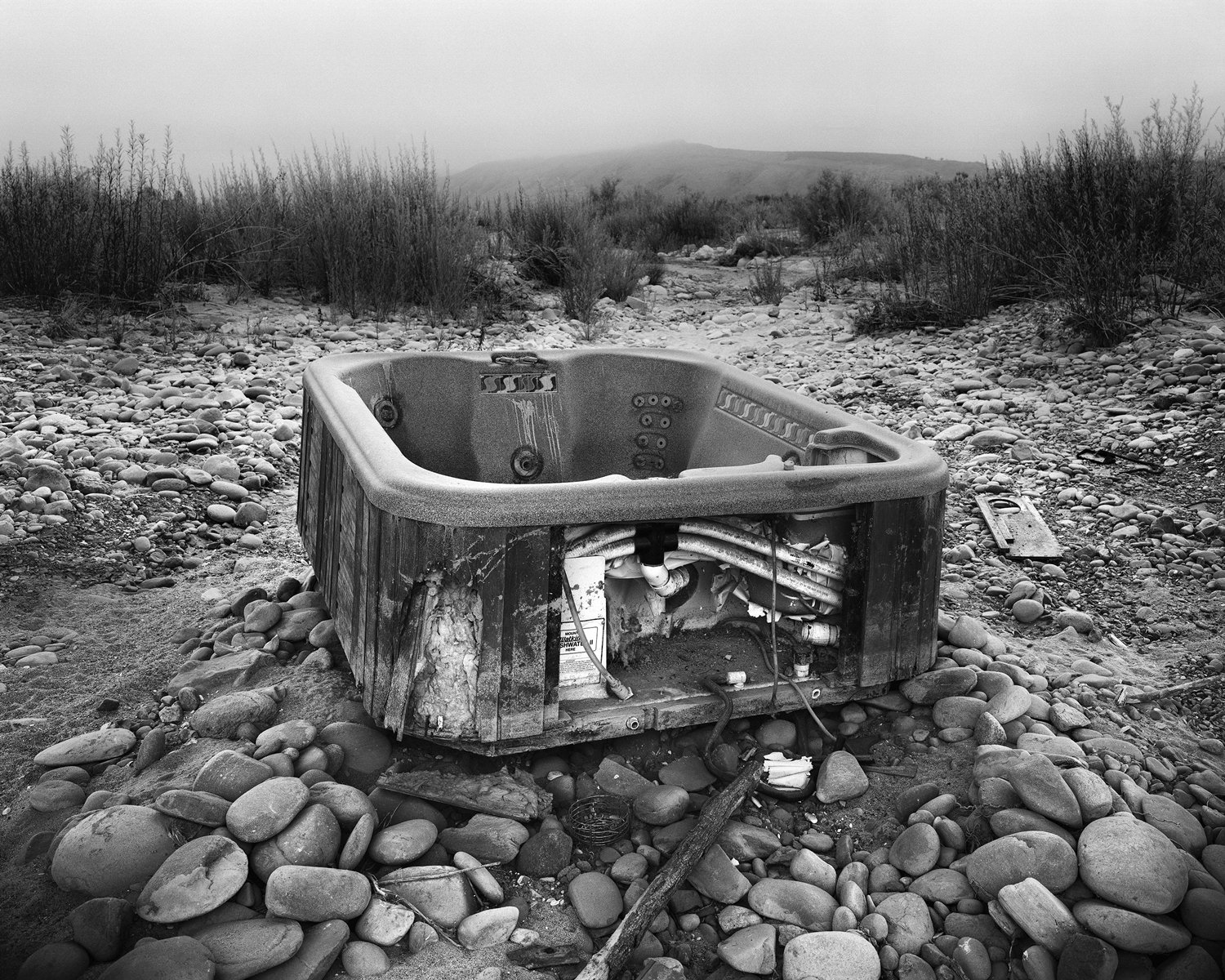Landfill by Brett Kallusky
Issue 162
Since 2013, I have been photographing in the Santa Maria Valley in central California. This historic place, with its strong roots in Indigenous and Spanish-American cultures, is a reflection of a much larger cycle of production, consumption, and waste. It is filled with visual juxtapositions: a place of verdant hills defined by world-renowned vineyards and a valley floor filled with vast rows of crops that conceal millions of tons of garbage and industrial refuse. The lyrically named Sugar Street—the street in the Santa Maria Regional Landfill that runs parallel to the adjacent Santa Maria River—is situated directly alongside tens of thousands of acres of agricultural fields, where crops such as strawberries, carrots, and cauliflower are grown on a massive scale for consumption by Americans everywhere—coast to coast.
Plastic winds its way through this engineered landscape like a dark, opaque river. Sheets of it are used above the soil as an exoskeleton, warming the raised ground and protecting the strawberry plants whose roots are wrapped in, and watered by, an engineered cocoon. All the while, hawks dutifully keep watch over the fifty-year-old state-of-the-art landfill that is nearing the end of its life. It is running out of land.
The plastic tubing that is used for irrigation, once it is retired from the fields, is formed into bales of several hundred pounds each, leaving immense but temporary ramparts and parapets in the landscape. This tubing may be shipped out to be recycled in Asia and made into garbage bags, setting the stage for a return to America’s landfills months or years later. At other times, the compressed bales are used to reinforce the plastic lining of the landfill cells, forming (we are told) impermeable walls underground to guard against leeching.
The process of covering, wrapping, and burying our waste, alongside the sculpting and hollowing out and harvesting of the earth, take place here on an industrial scale, but they have an uncanny resonance. We undertake many of these same processes in our ordinary lives everywhere: ritual human actions that mark the passage of time through the landscapes and landfills we create. In this sense, the subject of these photographs—the hidden side of California’s historic Santa Maria Valley––is both a microcosm and macrocosm of modern-day America. And every time someone living elsewhere bites into a tasty Valley-grown strawberry, cauliflower, or carrot, this book is a reminder of all they cannot see that went into what makes possible their very being.
Brett Kallusky (he/him) lives and works in Minneapolis, Minnesota.
brettkallusky.com | @brettkallusky
Baled Plastic, Santa Maria Regional Landfill, 2013
Road Gravel, Santa Maria Regional Landfill, 2015
NHIS (Non-Hazardous Hydrocarbon Impacted Soils) Santa Maria Regional Landfill (Left) 2015
NHIS (Non-Hazardous Hydrocarbon Impacted Soils) Santa Maria Regional Landfill (Right) 2015
The Witch (Bird Abatement) Santa Maria Regional Landfill, 2013
Abandoned Hot Tub, Santa Maria River, 2017
Strawberry Field, Nipomo, 2017







